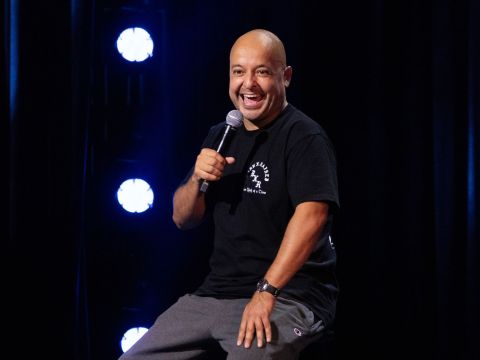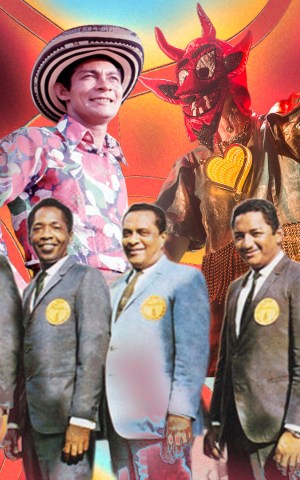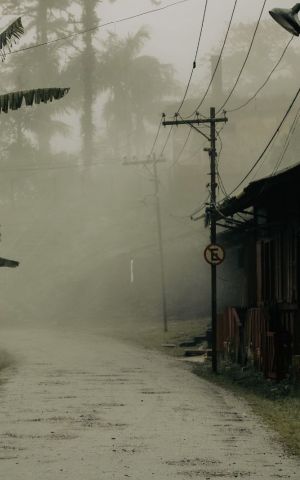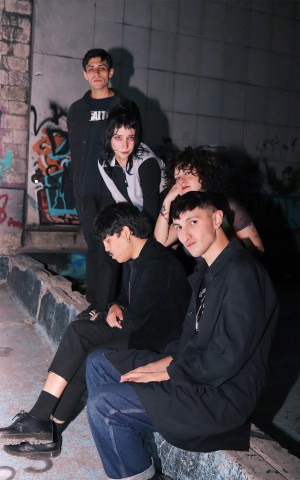In traditional Colombian music, the Devil dances. Due to the religious syncretism born from the intermingling of Indigenous, Afro-Colombian, and settler communities, the representation of this horned figure has lost its malevolent character and become a being that serves as an excuse for disinhibition, excess, and, above all, Carnival. For example, in the Colombian Caribbean, the Devil is a central figure in the celebration. It has inspired forms of popular poetry, festivities featuring the African drum—which served to mask various deities from the first continent under the diabolical face—and a kind of sacred theater in which the forces of good ultimately defeat the Devil.
The Devil doesn’t incite evil in Colombia; he functions as a kind of trickster who serves as an excuse to celebrate life, despite the warnings of the most devoted grandmothers. That’s why it’s important to go deeper into the legends and folklore of its tripartite identity, as it shows how this dialogue between cultures sheds light on the idiosyncrasies of a country deeply rooted in religious festivities and rituals. This persistent figure reveals a culture shaped by syncretism, where Indigenous cosmologies, Catholic morality, and Afro-Caribbean mysticism coexist. Oral tradition, vallenato, música llanera, and their mythic narratives are linked to broader Latin American tales of música vs. evil. From vallenato’s folklore to Eblis Alvarez’s contemporary endeavors, this Faustian tale escapes the European inn and finds its way to the popular streets of Colombia. Don’t brace yourselves: there’s nothing to fear.
In popular culture, the legend of Francisco, el hombre is where the Devil becomes a key figure in Colombian folklore. This moniker was given to him by an uncle because he acted like a man since he was young. Perhaps that’s why he didn’t fear death or the Devil. It is said that this minstrel defeated the sinister character while improvising poetry in a duel of accordions. Ultimately, Francisco defeats him by reciting the Creed backward, with the Devil recognizing his superior musical skills.
Musician and composer Andres Landero recalls the legend of Francisco, el hombre in “Si me sale el diablo,” a merengue exalting the virtues of accordion music. In Escalona, a soap opera loosely based on the life of musician Rafael Escalona, Carlos Vives defeats a devilish accordion player while reciting the Creed as Francisco, el hombre to the melody of “La gota fría,” a classic vallenato. In música llanera, from Venezuelan and Colombian folklore, Florentino serves as an analog case, inspiring stories such as “El caporal y el espanto” by Juan Harvey Caycedo.

On the other hand, Los Corraleros of Majagual’s “El Diablo” is a festive tongue twister that reminds us, while summoning the Virgin Mary and Jesus Christ, how this figure is ever present in society, especially when no one is looking. At least that’s what the song seems to indicate. Also, in “El Diablo es Molestoso” from Francisco Rada, on whom the legend of Francisco, el hombre is loosely based, the singer Enrique Díaz warns about the dangers of partying and money wasting, while the Devil whispers to irresponsible party goers to spend their fortune drinking.
In Boyacá, a state (or “departamento”) far away from the Caribbean, Jorge Velosa y los Carrangueros tell the story of a little devil that falls into a river while being drunk in “Las Diabluras,” which is also a tender way of referring to children’s mischief. The song ends by mentioning Riosucio’s Carnival, where the devil is burned in the central square at the end of the festivities. Taking mockery further, in Antioquia, Octavio Mesa won a battle against the Devil with a machete in “La Pelea con el Diablo.” He even kept the Devil’s tail to prove his daring feat.
More recently, in Manizales, Sanalejo uses the Devil as a metaphor for partying in tropipop key, a super pop form of tropical music that had its heyday during the early 2000s. Meanwhile, Andrea Echeverri from Aterciopelados falls in love with the Devil to signal how, when we’re growing up, we forget our parents’ advice to discover ourselves. In the live version from 2024, Echeverri wears a Devil mask resembling the Diablos arlequines from the Barranquilla carnival. Even more, in Chupame el dedo’s latest record, No te metas con Satán, the Devil is a poor old man who ends up infected with a STD.

We could go on and on with examples, but it’s clear that what was once scary is now laughable. In Colombian folklore and later music, the Devil is danced with, laughed at, serenaded, and even invited to parties. Across centuries of songs, stories, and rituals, this horned figure has become less a symbol of evil and more a mirror for the country’s values, contradictions, and cultural imagination. His enduring presence in music—from vallenato duels to Andean parables—signals Colombians’ long embrace of ambiguity. Rather than banishing the Devil, they give him a drink, a verse, and a seat at the table.
In a country where joy and pain often dance hand-in-hand, the Devil serves as a trickster: not quite a villain, not quite a hero, but a narrative tool to talk about desire, temptation, disobedience, and ultimately, freedom. In Colombian music, the Devil isn’t the one who corrupts the soul. He’s what animates it.




